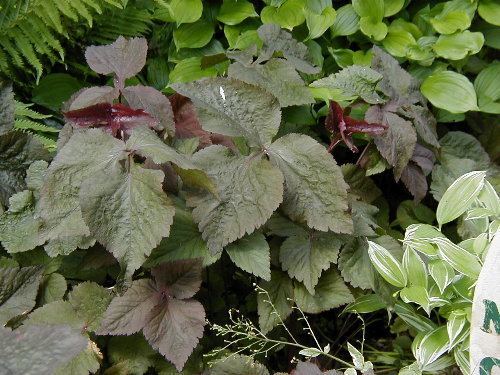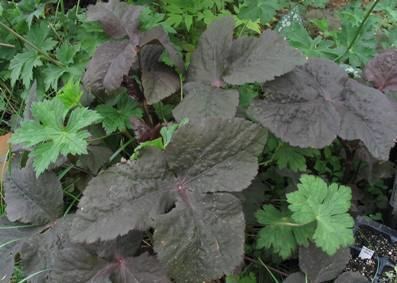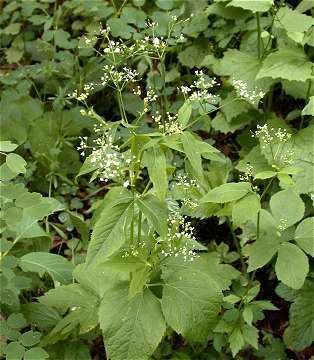Tribe Oenantheae Higher classification Umbelifers | Subfamily Apioideae Scientific name Cryptotaenia Rank Genus | |
 | ||
Similar Cicely, Sweet Cicely, Grains of Selim, Buknu, Alligator pepper | ||
Cryptotaenia garden plants
Cryptotaenia, also honewort, is a genus of two species of herbaceous perennial plants, native to North America, Africa, and eastern Asia, growing wild in moist, shady places.
Contents
Species

Species accepted by The Plant List as of August 2014. Some studies have suggested that the African and Canary Island species should be moved to other genera and that the Italian endemic Lereschia thomasii should be included in Cryptotaenia, but we list them here provisionally pending further study.

- Cryptotaenia africana (Hook.f.) Drude - Gabon
- Cryptotaenia calycina C.C.Towns. - Tanzania
- Cryptotaenia canadensis (L.) DC. - eastern + central North America
- Cryptotaenia elegans Webb ex Bolle - Canary Islands
- Cryptotaenia flahaultii (Woronow) Koso-Pol. - Republic of Georgia
- Cryptotaenia japonica Hassk. - Japan, Korea, China
- Cryptotaenia polygama C.C.Towns. - Tanzania
Culinary uses
Cryptotaenia japonica is raised as a seasoning (similar to angelica).

English names for the plant include mitsuba, Japanese wild parsley, stone parsley, honeywort, san ip, and san ye qin (from Chinese: 三叶芹; pinyin: sānyè qín). Like parsley, the flavor is clean and refreshing with a slightly bitter taste which some describe as celery-like. The sprouts are used in salads and soup. In Japan it is commonly used as a garnish in soups or atop entrees or as a sushi ingredient.
Nutritional benefits
Mitsuba's dark green leaves, stems, and pods have an extensive nutritional profile, including high levels of calcium and vitamin C.
